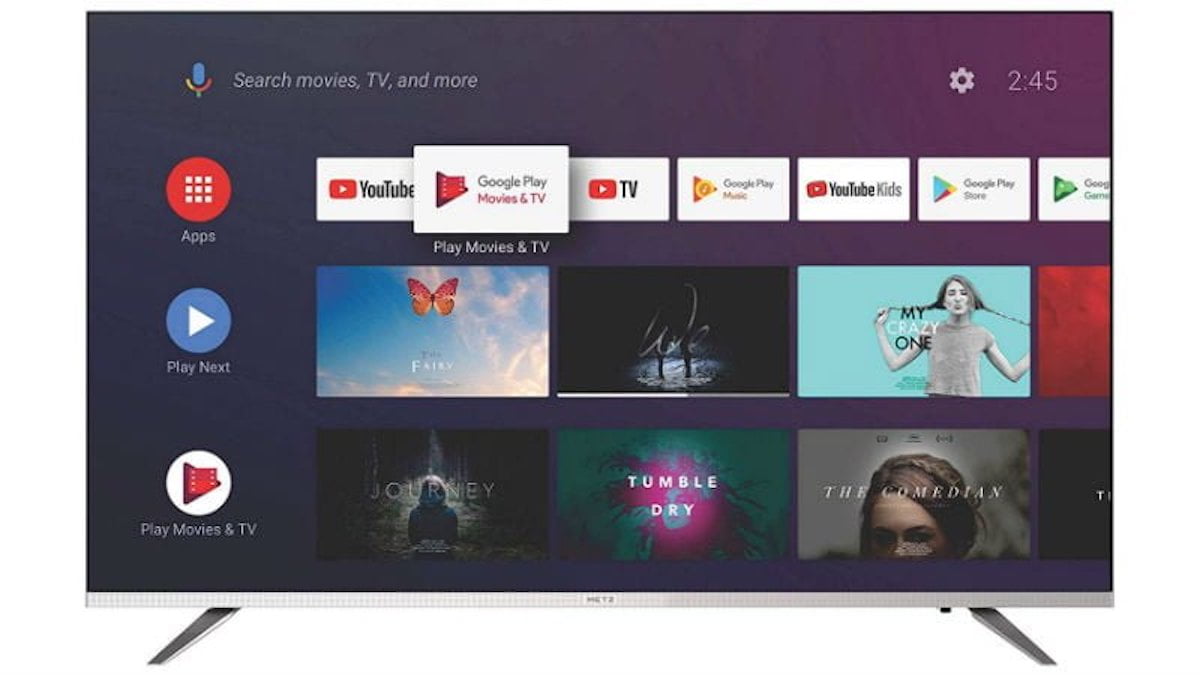Android TV Focuses on User Content
Android TV, a version of Google Android designed for TV, has its focus on content across its home screen. Unlike its smartphone counterpart that focuses on apps and widgets, Android TV welcomes users with content from Netflix, trending videos from YouTube and popular movies from Google Play. The OS is intended to help user discover content they would watch on their Smart TV. Android TV also supports Google Play app store which means users can install thousands of apps that are designed for Smart TV. Google Assistant is also deeply integrated which lets users to find answers, discover content or control other smart devices using their voice. Chromecast is also baked into the OS which means users can cast their photos, videos or music from their device to TV. While several manufacturers have released Android TVs in recent years, Counterpoint Research said that Xiaomi has emerged as the segment leader with 40% YoY growth in 2019. The top rated TV from Xiaomi is the Mi TV 4X is currently priced at Rs 54,999 while the base model Mi LED TV 4A Pro 32-inch currently retails for Rs ,499.
Tizen OS Deeply Integrated into Samsung Ecosystem
The second popular Smart TV in the Indian market is the Tizen OS, the proprietary operating system used by Samsung on its Smart TVs. Unlike the Android TV, the Smart HUB interface on Samsung runs along the bottom of the screen filled with video content and apps. The OS also supports WiFi Direct that lets users share videos or photos from a compatible smartphone onto their TV. The Samsung Smart View app lets users control the Smart TV from a compatible device. Samsung TVs also include Bixby Assistant which like Google Assistant lets users discover content and get updates using their voice. Much of the features including Two-Way Sharing work only on Samsung mobile phones which usually run on Android OS. Samsung has a range of TVs in India with the base model, the N5000 series priced at Rs 27,500.
WebOS Delivers ‘what you want, when you want it’
WebOS has had a long journey ever since its introduction on smartphones in late 2000. The OS was acquired by LG in 2013 and ever since has been used on its Smart TVs. The company says the OS delivers “what you want, when you want it, hassle-free.” Similar to the Tizen interface, the video content and apps can all be accessed from the bottom of the screen. Google Assistant is built into the OS letting users discover and control things with their voice. Alexa is also deeply baked into the OS which means that the user can use Alexa devices to control the TV. The Smart Connectivity feature lets users share content from mobile phone onto the TV through Bluetooth and Miracast. Wireless streaming is also enabled using built in WiFi. Like Samsung, LG has a range of TVs across all price range with the lowest priced Smart TV being a 32-inch that retails for Rs 24,990.
